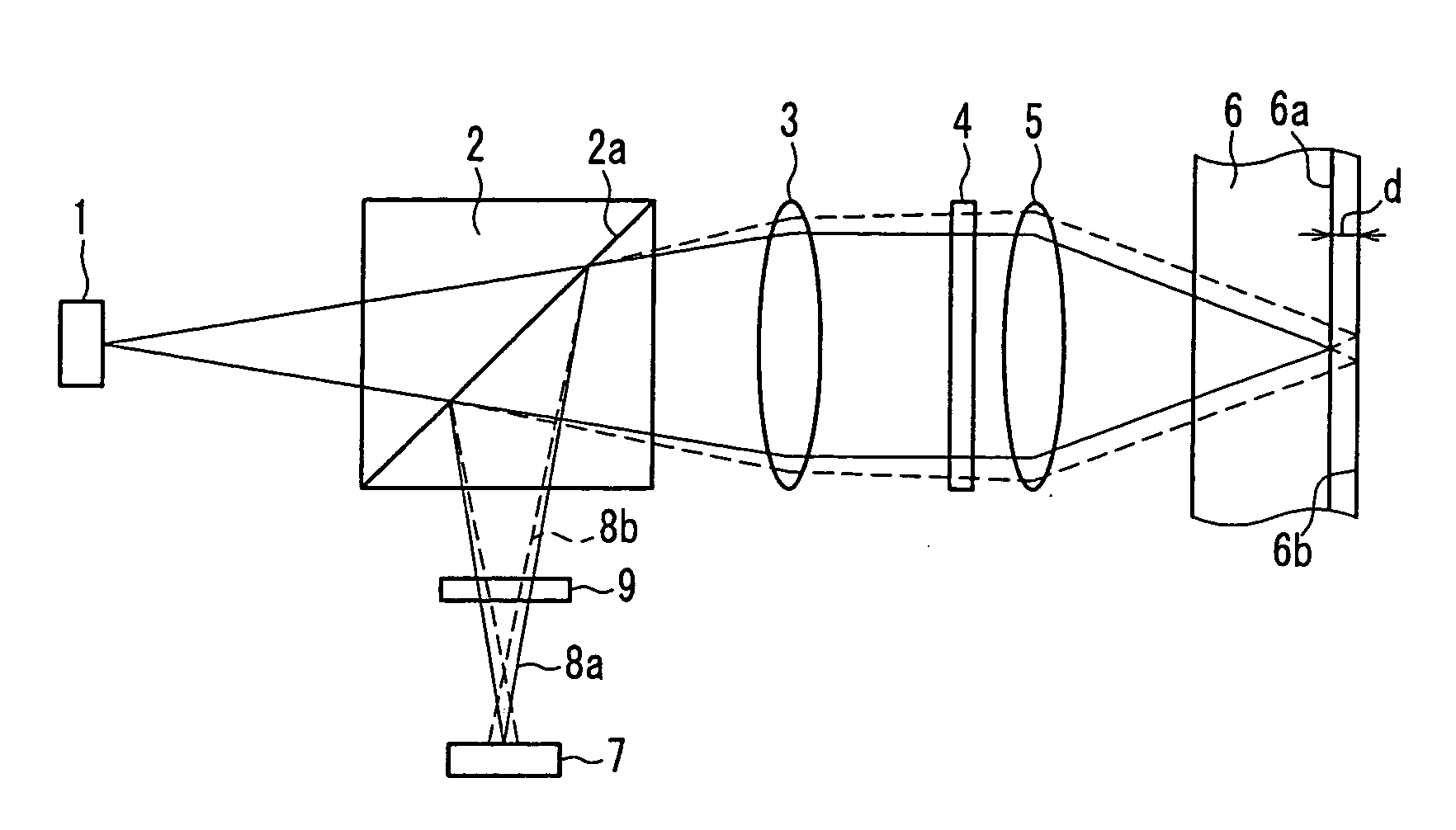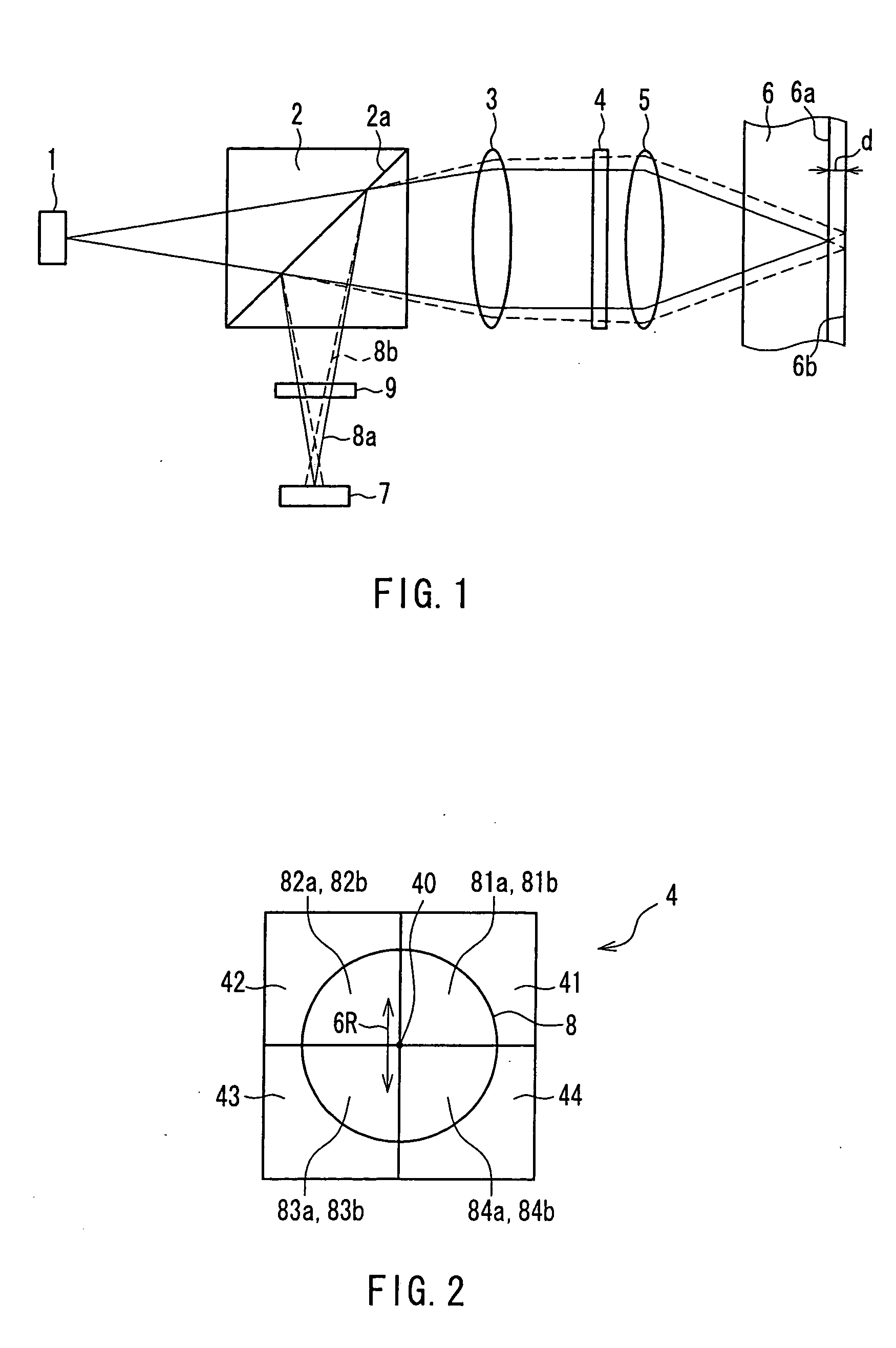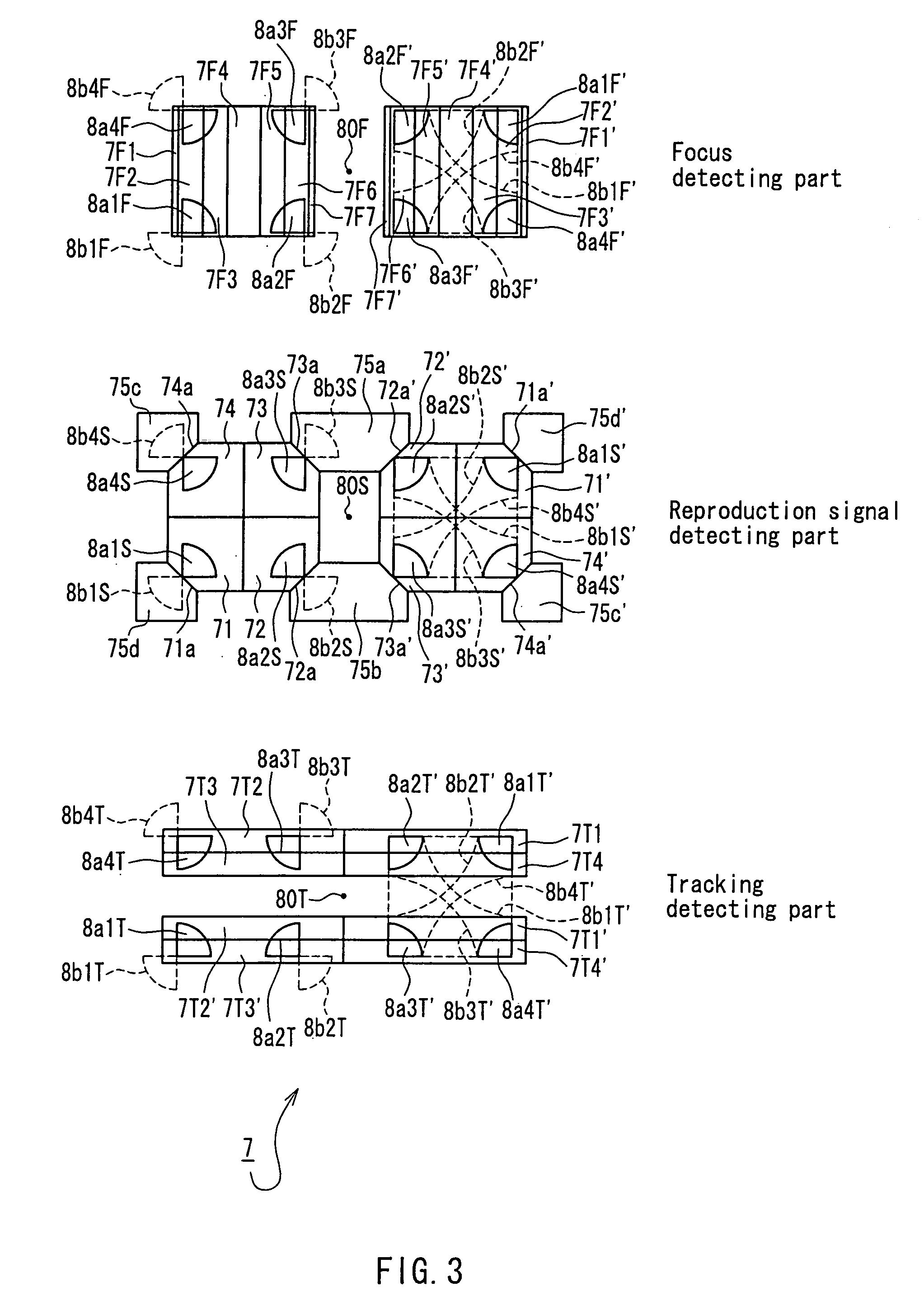Optical disc device
a technology of optical discs and optical discs, applied in the direction of optical recording heads, data recording, instruments, etc., can solve the problems of difficult accurate signal reading or writing, difficult reading of a reproduction signal from the focus control plane, and difficult accurate signal writing
- Summary
- Abstract
- Description
- Claims
- Application Information
AI Technical Summary
Benefits of technology
Problems solved by technology
Method used
Image
Examples
first embodiment
[0068]FIG. 1 is a schematic cross-sectional view showing an optical disk device according to a first embodiment of the present invention (in the state where a focal point of an objective lens is on a first signal plane of an optical disk). FIG. 2 shows a hologram pattern formed on a hologram that serves as an optical splitter in the optical disk device. FIG. 3 shows a photodetection pattern formed on a photodetector that is used in the optical disk device and light distribution on the photodetector in the state shown in FIG. 1. FIG. 4 illustrates positions of focal points of returned lights (0th-order diffracted light beams resulting from the diffraction by a diffraction grating) located on the front side and the back side of the photodetector in the cross-section taken along an optical axis of the optical disk device in the state shown in FIG. 1. The elements common to the optical disk device of the present embodiment and the conventional optical disk device are indicated with the ...
second embodiment
[0103] Although the wavefront is divided into four equal parts by the hologram in the above-described first embodiment, the wavefront may be divided into n equal parts (n is an integer of 2 or more). The following description is directed to an example where the wavefront is divided into two equal parts.
[0104]FIG. 9 shows a hologram pattern formed on a hologram that serves as an optical splitter in an optical disk device according to a second embodiment of the present invention and FIG. 10 shows a photodetection pattern formed on a photodetector that is used in the optical disk device and light distribution on the photodetector. The optical disk device of the present embodiment is the same as the optical disk device of the above-described first embodiment except for a configuration of the hologram and a detection pattern on the photodetector. The elements common to the optical disk device of the present embodiment and the optical disk device of the first embodiment are indicated wit...
third embodiment
[0112]FIG. 11 is a schematic cross-sectional view of an optical disk device according to a third embodiment of the present invention (in the case where light is focused on a first signal plane of an optical disk). FIG. 12 shows a photodetection pattern formed on a photodetector that is used in this optical disk device and light distribution on the photodetector in the state shown in FIG. 11, FIG. 13 is a schematic cross-sectional view showing the optical disk device according to the third embodiment of the present invention (in the case where light is focused on a second signal plane of the optical disk), and FIG. 14 shows a photodetection pattern formed on the photodetector that is used in this optical disk device and light distribution on the photodetector in the state shown in FIG. 13. The optical disk device of the present embodiment is the same as the optical disk device of the above-described first embodiment except that the diffraction grating 9 is not provided and a photodet...
PUM
| Property | Measurement | Unit |
|---|---|---|
| size | aaaaa | aaaaa |
| width | aaaaa | aaaaa |
| angle | aaaaa | aaaaa |
Abstract
Description
Claims
Application Information
 Login to View More
Login to View More - R&D
- Intellectual Property
- Life Sciences
- Materials
- Tech Scout
- Unparalleled Data Quality
- Higher Quality Content
- 60% Fewer Hallucinations
Browse by: Latest US Patents, China's latest patents, Technical Efficacy Thesaurus, Application Domain, Technology Topic, Popular Technical Reports.
© 2025 PatSnap. All rights reserved.Legal|Privacy policy|Modern Slavery Act Transparency Statement|Sitemap|About US| Contact US: help@patsnap.com



